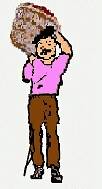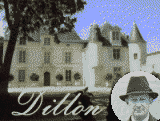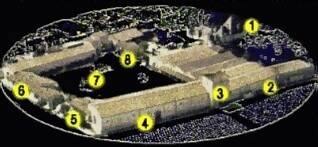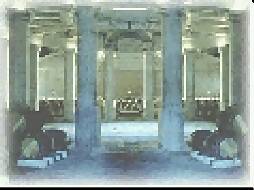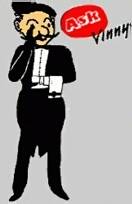Château
Haut-Brion is one of the few remaining family owned domains of the
Bordeaux
region with a history going back to the 16th century.
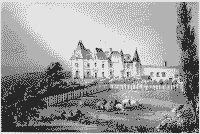 Joan Dillon,
duchesse of Mouchy, is keeping alive a tradition that was begun on
April
12, 1533 by Jean de Pontac.
Joan Dillon,
duchesse of Mouchy, is keeping alive a tradition that was begun on
April
12, 1533 by Jean de Pontac.
She
is the latest link in a chain that included the Fumel and the Larrieu
families
and Talleyrand.

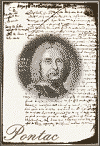
The Pontac
Family
In 1550, Jean
de Pontac built the château at Haut-Brion
The Pontac
family traces their origins to the small city of the same name in the
Béarn
region near Pau. The family history dates back to the 11th
century,
and as early as the 15th century, the name Pontac is found
associated
with wine trading.
The
greatest vineyard of the Graves area is Chateau Haut-Brion, in Pessac,
a suburb of Bordeaux. The main road, with its trolley-bus line, divides
the vineyard.
Arnaud
I de Pontac, member of the bourgeoisie and a Bordeaux wine merchant
was the family patriarch and founder of the family fortune during the
15th
century.
Jean
de Pontac (1488-1589). This son of Arnaud is the original founder
and
builder of the Château Haut-Brion. At the age of 37, he married
Jeanne
de Bellon who brought a part of the Haut-Brion domaine in her dowry.
During
the course of his three marriages, the last begun at the age of 76,
fifteen
children were born.
|
As
the years passed, Jean acquired parcels of the surrounding land thereby
enlarging the Haut-Brion acreage. In 1550, he began construction of the
château for the sole purpose of exploiting the vineyards.
Jean
died at the age of 101, and his unusually long life spanned the reigns
of Louis XII, François I, Henri II, Charles IX and Henri III.
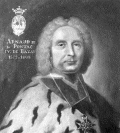
Arnaud
II de Pontac (1530-1605), fourth son of Jean inherited the domain
at
the age of 59 years. Ordained a priest at 27, he became Bishop of
Bazas.
His name was legendary in the region. He was a charitable man who spent
a large part of his fortune restoring the cathedral and trying to
alleviate
the general poverty. Local lore has it that his funeral cortege was
fifteen
kilometers long.
Geoffroy
de Pontac (1576-1649). At the time of the death of his uncle,
Arnaud
II, Geoffroy was already residing at Château Haut-Brion. A man of
the 17th century, he lived like the great members of the court. He
built
a magnificent home named the "Daurade", and decorated it with gilding
and
gold. The splendour of the residence attested to the already great
commercial
success enjoyed by Haut-Brion wine at this time.
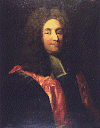
Arnaud
III de Pontac (1599-1681). Arnaud III led a life as luxurious as
that
of his father. His marriage to the daughter of the president of the
Parliament
of Paris brought him still greater prestige. It also gave him a
connection
to the Parliament of Bordeaux. He eventually became the first President
of the Parliament of Guyenne.
|
Because
of him, Haut-Brion developed its reputation in England. He was the
first
to understand the importance of the English market, despite the wars
and
other problems between the two realms.
François-Auguste
de Pontac (1636-1694) was the last Pontac to own Haut-Brion through
direct inheritance. He served as President of the parliament in
Bordeaux
in 1653, however his activities in London (for the prestige of
Haut-Brion)
became more important than his time in Bordeaux.
In
1666, he opened a tavern in London called the "Enseigne de Pontac",
which
became "...the most fashionable place in London..." in its
time.
Because
he was so often absent, François-Auguste left his manager
Bertrand
Dubut in charge. Dubut took care of the domain with few technical
resources.
He introduced the techniques of racking and fining.
François-Auguste
lived a life so rich and careless that the château was
repossessed
twice in order to pay his debts. He was eventually able to save his
property
thanks to both his influence and that of his wife, Félicie de
Crussol
d'Uzès.
At
his death, his debts passed to his sister Thérèse, as he
left no children.
Thérèse
de Pontac. Thérèse inherited two thirds of
Haut-Brion.
The last third became the property of Louis-Arnaud Lecomte, baron of
Tresne,
nephew of François-Auguste.
In
1654, Thérèse married Jean-Denis d'Aulède de
Lestonnac.
Curiously, Jean-Denis died only eighteen days after inheriting
Haut-Brion
from his wife.
His
son, François-Delphin d'Aulède de Lestonnac,
became
baron (and then marquis) of Margaux, then Haut-Brion.
After
the death of François-Delphin in 1746, his sister Catherine
d'Aulede
de Lestonnac, widow of François-Joseph de Fumel since 1688,
inherited the property.
|







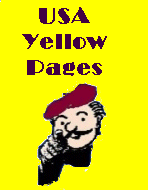
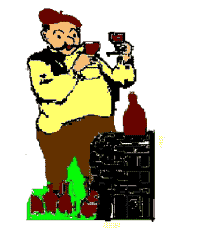
 LATEST
NEWS FROM BORDEAUX
LATEST
NEWS FROM BORDEAUX 